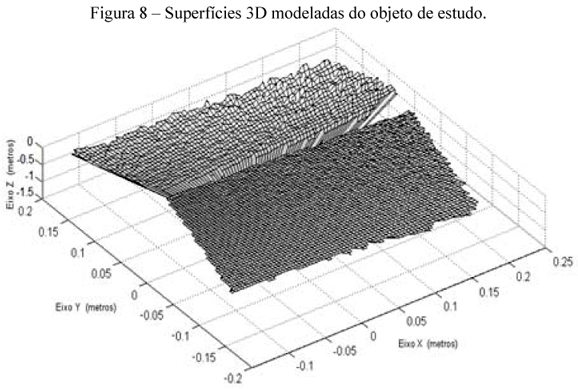In this paper we present a work that aims at studying the quality of 3D data obtained with a range camera and assessing its potential to model planes. The device, the PMD CamCube 2.0, computes the distance to the objects using the Time-Of-Flight (TOF) principle. At first, the equipment was calibrated. The Interior Orientation Parameters (IOP) allows reducing geometric distortion in the images. Another factor that influences the quality of data is the presence of noise introduced by illumination conditions, which can be controlled by varying the integration time of the light source. After determining the best integration time and interior orientation parameters, the device was used to capture data of an object with flat surfaces. The dataset was used to compute the 3D coordinates of each point and then the dataset was segmented, in order to identify the flat surfaces of the object. The segmentation solution is based on the computation of the local eigenvalues, using a small moving window, to generate a new image where borders are highlighted. This new image is segmented using the mean-shift approach to delineate the planes of interest. Finally, the dimensions of the object are compared to reference values. The comparison showed errors around 2cm, within the expected range. The object can then be modeled with the 3D points cloud.
Range Image; Three-dimensional Modeling of Objects Surfaces; Eigenvalues; Eigenvectors; Images Segmentation; Mean-Shift; 3D Points Orthogonal Projection






















